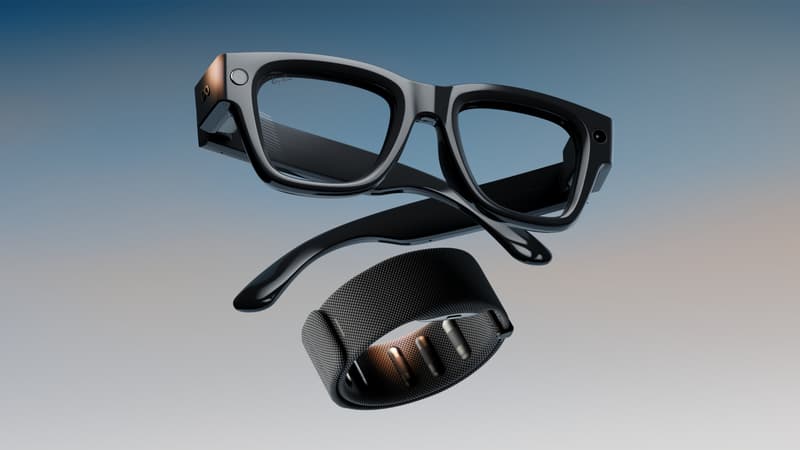“If connected objects are going to replace our phones, they must age at least as well as our favorite glasses,” says iFixit in the introduction to its article on the repairability of Ray-ban Display, Meta’s new connected glasses.
The repair specialist is questioning this product, which he claims are “the most advanced augmented reality consumer glasses ever designed.” An observation that does not hide the fact that they are impossible to repair.
A lot of glue and overly technical glasses.
It must be said that these glasses have a microprojector on the right lens showing a 600x600px color image. If iFixit admits it’s “very excited,” it’s a cold shower when it comes to maintenance, and even worse if the right glass breaks. At $800, Meta may have kept prices low, but they clearly didn’t think about making their device durable.
The first problem is obviously the battery. It is a small battery (960 mWh, compared to the 856 mHw of the Oakley) placed on the right temple of the glasses. With the six hours of use promised by Meta, we can quickly imagine that it will be necessary to use several charging cycles per day, which will have the direct consequence of accelerating wear. If replacing it is not “totally impossible”, Meta still needs to offer a replacement, which is not the case.
But to achieve this you have to be especially careful and use a blast of hot air to loosen the plastic. This is the most complex aspect, because to guarantee complete waterproofing, Meta has done everything possible. If you touch too much, you can easily break one of the connectors.
Another problem: the glasses. Whether it’s a break or a scratch, glasses are part of the wearer’s sometimes tumultuous life. Therefore, you may need to replace them much more frequently than expected, especially if they are your main glasses.
This without taking into account the small projector (integrated in the right branch), points out iFixit. It actually projects an image from a small screen similar to an LCD TV, before passing through several small mirrors that reflect around 5% of the light, finally appearing on the glass.
Do it as well as the iPhone Air
Added to this is the work of making the glass, which will deflect the light so that we can clearly see the “screen” reflected in it. In reality, several layers of glass are added on top of each other. A true work of art that prevents the formation of artifacts and allows you to see the screen even if it is very sunny. Additionally, the processing has been designed so that someone standing in front of you does not see what is being shown to you. Finally, there’s the auto-darkening feature to darken the lenses when there’s too much light, on the fly. But like the battery, this treatment has a limited lifespan.
These glasses, precisely, are in the end the main problem in the repairability of Ray-ban Screens. iFixit struggles to see how a traditional optician will be able to replace a broken or scratched lens.
However, not everything is bad. In this way you can change the hinges, but you will have to go through the glued structure and the small screws (T3).
For the rest, and in particular the “technical” part, we find the Snapdragon AR1 chip, the 32 GB of flash memory and the 2 GB of Ram, but everything is soldered, as are the speakers. Welding that makes any manipulation very risky in case of breakdown.
“Each component demonstrates how far Meta has come in terms of miniaturization, but also how far it still has to go in terms of repairability,” explains iFixit.
The specialist ends by citing the good example of the iPhone Air: this phone, thinner and lighter than most of its competitors, remains “surprisingly repairable.” It’s up to Meta to take an example.
Source: BFM TV


